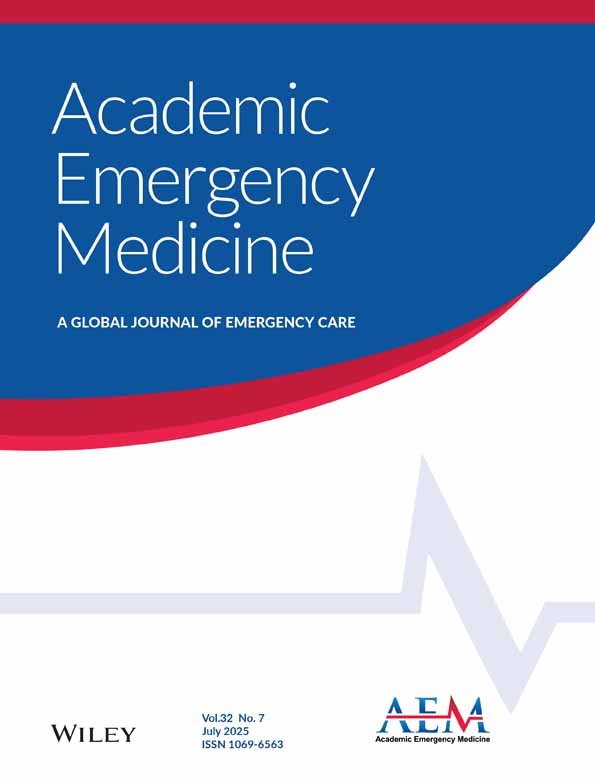First Trimester Point of Care Ultrasound: Imaging Features and Review Behaviors Associated With Diagnostic Accuracy
Funding: This study was funded by the Emergency Medicine Foundation—Council of Residency Directors (EMF-CORD), Research Grant, and the Seed, Bridge, Multidisciplinary Fund (Memorial University). The funding agencies had no role in the design and conduct of the study.
Supervising Editor: Daniel L. Theodoro
ABSTRACT
Objectives
We aimed to identify the most diagnostically challenging features in first-trimester point-of-care ultrasound (FT-POCUS) images. We also sought to determine the physician image review behaviors associated with increased diagnostic accuracy.
Methods
We conducted a multicenter prospective cross-sectional study in a convenience sample of emergency physicians in the United States and Canada. The web-based intervention included 400 FT-POCUS cases acquired via the transabdominal or transvaginal approach. Participants reviewed FT-POCUS cases to identify pregnancy-related imaging findings. We captured clickstream-level data with each case encounter, including the correctness of a participant's response and physician image review behaviors.
Results
We enrolled 317 participants, who collectively generated 16,295 case interpretations. The most diagnostically challenging imaging findings included eccentrically located gestational sac and endometrial collection/heterogeneous uterine material (p < 0.001 for all comparisons). Participants who reported “definite” certainty, as opposed to “probable,” demonstrated a significantly higher odds of getting the diagnosis of intrauterine pregnancy (IUP) present or absent correct (OR = 4.48; 95% CI 4.00, 5.01) and a lower odds of time spent reviewing cases (OR = 0.46; 95% CI 0.40, 0.51). Those who reviewed a higher proportion of available views per case were more likely to accurately identify a fetal heartbeat (OR = 1.51; 95% 1.34, 1.69), multiple IUPs (OR = 1.33; 95% CI 1.10, 1.61), and adnexal structures (OR = 1.11; 95% CI 1.04, 1.17), but less likely to correctly identify an IUP (OR = 0.93; 95% CI 0.88, 0.99) and endometrial fluid collection/heterogeneous uterine material (OR = 0.96; 95% CI 0.92, 0.99).
Conclusions
Emergency physicians interpreting FT-POCUS images encountered specific diagnostic challenges that may increase risks to patient safety. We found that higher diagnostic confidence correlated with greater diagnostic accuracy and efficiency. Reviewing a larger proportion of available images improved diagnostic accuracy for some findings, but not for others.
Conflicts of Interest
The data used for this research was extracted from the ImageSim platform. Dr. Kathy Boutis is married to Dr. Martin Pecaric of Contrail Consulting Inc. Contrail Consulting Inc. provides technical support for ImageSim. This is managed with an agreement with the Hospital for Sick Children. Dr. Boutis and Dr. Pusic are unpaid co-academic directors for ImageSim. The other authors have nothing to declare.
Open Research
Data Availability Statement
The data that support the findings of this study are available on request from the corresponding author. The data are not publicly available due to privacy or ethical restrictions.




